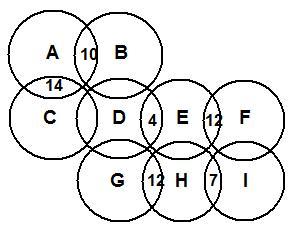All prime numbers are contained in a 1x rectangle. Prime numbers are 2, 3, 5, 7, 11, 13, 17 etc.
Odd numbers cannot be in a 2x rectangle (Example: 9 = 1x9 or 3x3).
Anytime you have a number beside another number, you know that they are contained in different areas, therefore you know that a line goes between them. This is shown with the 3 and 4 in the sample puzzle below.
Princess Pencil Puzzle
Friday, May 20, 2011
Saturday, May 14, 2011
COLOR PICTURE MAZE #1 - BEGINNER LEVEL
This might be the one and only Color Picture Maze I make because it takes so much time to draw it on the computer. Start from the upper left corner and work your way through the maze changing colors throughout the maze to match the colored dots given to you. End at the star. The easiest way to work this puzzle is to double click on the picture and save it to your computer. Then open it in paint.
COLOR PICTURE MAZE #1 - BEGINNER LEVEL
COLOR PICTURE MAZE #1 - BEGINNER LEVEL
Tuesday, May 3, 2011
FILLOMINO #1 - BEGINNER LEVEL
A fun new kind of puzzle for you to enjoy...
Fillomino Rules
Helpful Hint for Fillomino
FILLOMINO #1 - BEGINNER LEVEL

Fillomino Rules
Helpful Hint for Fillomino
FILLOMINO #1 - BEGINNER LEVEL

FILLOMINO HELP
Whenever there are two 2's diagonal to eachother and you know by the rules that they cannot horizontally or vertically share sides, they must be seperated from eachother.
FILLOMINO RULES
Fillomino puzzles are grids that have numbers in them which tell you how to block off the grid into areas. Seperate the grid by drawing thick lines to block off cells. Every square in the grid must be used and cells with numbers tell you how many cells are contained in the blocked off area that contain it. Not all blocked off areas contain a number. No areas with the same number of cells can be vertically or horizontally adjacent to eachother (in other words, no area of 4 can share an edge with another area of 4).
Small Sample Puzzle:
Small Sample Puzzle:
Monday, April 25, 2011
HANJIE #1 - BEGINNER LEVEL
Hanjie otherwise known as nonograms show a very simplistic idea of a pencil puzzle. The rules are very simple and easy, but the execution of these rules can get to be very complicated in more complex puzzles.
Rules: You have a grid of squares, which must be filled in with a specific pattern as given to you by the numbers on the sides of the grid. These numbers are listing the lengths of the runs of filled in squares on that row or column in the order that it shows on the grid. (Example: the numbers beside a row are listed as 1 4 2; the 1 filled square will be to the left of the run of 4 filled in squares, and the run of 4 filled squares is to the left of the 2 filled squares) All runs of filled in squares must be seperated by atleast 1 blank square. The end result is usually a picture.
Sample of finished puzzle:
Nonograms can look confusing and be frustrating if you aren't sure where to begin. I always look at all the rows one by one and then move to the columns. I have provided some basic help on the "Pencil Puzzle Help" page to start you off. The "Pencil Puzzle Help" page is located in the left column of the blog. Use dots to indicate a square that will not be filled in.
HANJIE #1 - BEGINNER LEVEL
Rules: You have a grid of squares, which must be filled in with a specific pattern as given to you by the numbers on the sides of the grid. These numbers are listing the lengths of the runs of filled in squares on that row or column in the order that it shows on the grid. (Example: the numbers beside a row are listed as 1 4 2; the 1 filled square will be to the left of the run of 4 filled in squares, and the run of 4 filled squares is to the left of the 2 filled squares) All runs of filled in squares must be seperated by atleast 1 blank square. The end result is usually a picture.
Sample of finished puzzle:
Nonograms can look confusing and be frustrating if you aren't sure where to begin. I always look at all the rows one by one and then move to the columns. I have provided some basic help on the "Pencil Puzzle Help" page to start you off. The "Pencil Puzzle Help" page is located in the left column of the blog. Use dots to indicate a square that will not be filled in.
HANJIE #1 - BEGINNER LEVEL
SHAPE KAKURO #1 - BEGINNER LEVEL
In this Shape Kakauro puzzle each shape has a letter in it. Each letter has a different number value (1 through 9). Where the shapes overlap there is a number that equals the sum of the values in those shapes. Find the value of each letter in the puzzle.
SHAPE KAKURO #1 - BEGINNER LEVEL
SHAPE KAKURO #1 - BEGINNER LEVEL
Subscribe to:
Comments (Atom)







